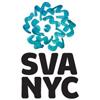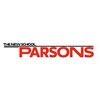Northeastern University (Northeastern) is an R1 Research University that houses 10 research institutes. Examples include the Experiential AI Institute, the Experiential Robotics Institute, and the Institute for the Wireless Internet of Things. Northeastern is also one of the top cooperative (co-op) education programs in the U.S. Established more than a century ago, the program recorded more than 9,000 placements with 2,900 employers around the world between 2019 and 2020 alone. The school also integrates global experiences into learning at all degree levels.
The College of Arts, Media, and Design (CAMD) at Northeastern has a number of programs for students seeking a graduate degree. All programs provide access to the schools institutes, co-op program, and global experiences. For students seeking advanced careers or leadership roles in UX/UI/HCI, the CAMD has an Experience Design MS and a graduate certificate in Experience Design. The MS is a one-year, 32 credit hour program and the certificate is a one year, 16 credit hour program.
Program highlights include exhibitions, guest lectures, and workshops; a cross-disciplinary curriculum that explores human-computer interaction, engineering, cybernetics, business, and psychology; and project-based courses.
Students in both the MS and certificate program have access to several CAMD labs that support research, projects, and learning in UI/UX/HCI, extended reality (XR), and augmented and virtual reality (AR/VR ).
In the Experiential Technologies Lab and User Testing Environment students develop software, and engage in interface development, game testing, and integration of biometrics tools including eye-tracking and wearable sensors. Lab resources include a one-way mirror, camera setups, and high-end computing.
MedVR is produced in partnership with Grassroots Developer Education, Inc., a 501(c)(3) non-profit, and the College of Arts, Media, and Design. Clinicians, engineers, and creatives collaborate in the lab to talk and learn about the latest AR/VR developments in healthcare and life sciences, invent translational AR/VR solutions, and solve healthcare problems by creating new experiences with AR/VR.
The Immersive Media Labs Suite includes technologies for design, development, and exploration of AR/VR/XR, 360 video, and virtual worlds. Students have access to individual workstations and a collaboration and teaching area. Current work in the Lab includes design, development, and exploration of immersive data visualization, immersive games to study and build problem solving and collaboration skills, exploration and integration of digital drawing, painting, and sculpting tools, storytelling, media advocacy, and healthcare delivery.
The Experience Design programs at Northeastern University culminate with a final project and portfolio of the students best work. Graduates of the CAMD Programs and others at Northeastern University have been hired by a variety of companies, studios, and organizations. Examples include Microsoft, Google, NASA, Amazon, Tesla, Textron, Apple, Nokia, NASA's Johnson Space Center, ABC, Walt Disney Imagineering, U.S. Air Force, Lockheed Martin, Walt Disney World, Oracle, Nickelodeon, AMC Networks, NBC, Abbott, United Technologies Aerospace Systems, Alpha Defense, Peloton, Photo Diagnostic Systems, Inc., 20th Digital Studio (formerly Fox Digital Studio), UBTCH Robotics, and ATYX Gaming.
Northeastern University began as the Evening Institute of the Boston Young Men’s Christian Association (YMCA) in 1898. The school serves approximately 36,630 students enrolled in more than 500 programs across nine colleges and schools. Northeastern has campuses in Boston, Massachusetts; Charlotte, North Carolina; Seattle, Washington; Silicon Valley; San Francisco, California; Toronto, Ontario Canada; Vancouver, BC Canada; London, UK; Portland, Maine, and the Massachusetts communities of Nahant and Burlington. Northeastern University is accredited by the New England Commission of Higher Education (NECHE).












